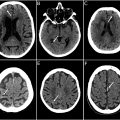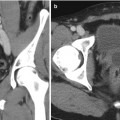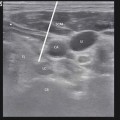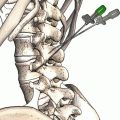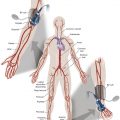Highlights
- •
Dedicated training improves basic radiology knowledge in early medical students.
- •
Hybrid pedagogy model tends to yield better short- and medium-term outcomes.
- •
Active learning may not be the most effective approach in all situations.
Abstract
Objective
There is a lack of knowledge about radiology among medical students at the start of their curriculum. The optimal teaching method for radiological basics remains uncertain. We conducted a controlled trial to compare the effectiveness of full active learning and hybrid lecture-based teaching methods.
Methods
All second-year medical students at Nîmes University Hospital (Nîmes, France) were invited to participate in a training session in the radiology unit. Volunteers were divided into hybrid lecture-based and full active learning groups. The hybrid lecture-based group received a lecture-based session followed by a unit visit, while the full active learning group utilized a structured form with progressive objectives during the visit. Pretests, immediate post-tests, and two-week follow-up tests were conducted. Short-term progression was the primary outcome, with secondary objectives including mid-term acquisition and associated factors.
Results
51 students participated, with 20 in the hybrid lecture-based group and 31 in the full active learning group. Both groups exhibited significant progression between the first and second tests (+8.48 and +2.52 respectively, p < 0.01). The hybrid lecture-based group showed significantly greater mean progression ( p < 0.01). Mid-term results indicated score decrease particularly in the hybrid lecture-based group, but it still maintained significantly superior performance (15.02/20 versus 12.33/20 for full active learning group, p < 0.01).
Conclusion
The hybrid pedagogical method yielded superior results in teaching second-year medical students the basics of radiology compared to the full active learning teaching method.
1
Introduction
Despite the crucial role of radiology in patient care and the necessity for physicians to request radiology exams, it remains a relatively unfamiliar medical specialty among medical students at the beginning of their academic curriculum [ , ]. Previous studies have demonstrated the value of introducing students to this specialty during the early years of medical education [ ]. As highlighted by recent discussions on interventional radiology education, including its applications in extreme settings, early exposure to the clinical innovations of this field could help overcome knowledge gaps and increase interest in radiology as a career [ , ]. To impart fundamental knowledge and skills in radiology to students, the University Hospital of Nîmes established a half-day training course specifically designed for second-year medical students.
However, determining the most suitable pedagogical method for this purpose is not straightforward. The lecture-based teaching method is the most well-known technique [ ]. It follows a teacher-centered approach, where the instructor delivers information to students who passively listen and take notes [ ]. Nevertheless, this teaching method relies on the students’ ability to concentrate and has been demonstrated to be less effective for skill acquisition compared to interactive approaches [ , ]. Over the past few decades, several innovative teaching methods have emerged, such as flipped classrooms and active learning approaches [ ]. In particular, active learning is a constructivist-based method that involves incorporating activities within traditional lectures, encouraging students to reflect on their actions and engage with the material [ , ]. This student-centered model emphasizes active participation and requires students to be actively involved in the learning process. Its main advantages include improved attention and motivation among students [ ]. Active learning has been extensively tested in various fields, including pharmacology, maxillofacial surgery, and science, technology, engineering, and mathematics (STEM), demonstrating significant improvements in learning outcomes .
Active learning can also incorporate elements of asynchronous learning, which involves a pedagogical method where interactions between teachers and learners can be time-shifted. This may involve incorporating briefing and debriefing periods as part of the learning process [ ].
Although studies have demonstrated the benefits of these methods in other fields, there is limited data available on the outcomes of these techniques in the field of radiology. While there are some publications focusing on radiologists’ education [ ], there is limited data on the learning of radiology basics among novice students. Additionally, there is a lack of data regarding blended learning models that combine various techniques and their effectiveness in this context.
We conducted a controlled trial to compare the effectiveness of a full active learning (FAL) model with a hybrid learning model (HL) that combines a lecture-based technique with a visit to the radiology unit.
2
Material and methods
2.1
Study design
This study was a controlled, single center, non-randomized trial conducted at the Univeristy Hospital of Nîmes in April 2023. The data were collected prospectively, and the evaluation was conducted in a blinded manner using computerized processes. All second-year medical students from Nîmes Medical University were invited to participate in a half-day (3 h: 9 am–12 pm or 2 pm–5 pm) training session held in the medical imaging unit.
Students who volunteered to participate were included in the study. To ensure manageable group sizes, different groups were planned, with no more than 20 students in each group. After registration, students were assigned to the groups by alternating their placement alphabetically (e.g., the first student to the HL group, the second to the FAL group, and so on), ensuring equal numbers in both groups.
A 15-minute briefing and debriefing session was conducted by a single radiologist from the unit (FO) for all groups, allowing students to ask questions. The briefing covered the structure of the training (including an explanation of the form and available resources for the FAL group), an introduction to the objectives of the session, and a brief overview of radiological modalities (CT, MR). Before the start of the pedagogic session, all students in each group completed a pre-test upon their arrival at the unit. This test was created using the Redcap platform and students completed it online via a personalized link (supplementary appendix 1). The completion time for this test was limited to 10 min.
The same test was administered immediately after the session, before students left the unit, and again 2 weeks after the training session at their homes, online. The same amount of time (10 min) was allotted for these tests as for the pre-test. For the 2-week post-tests, students were instructed to answer the test individually, and the completion time was limited to 10 min. An internet link was made available from 6 pm to 6 am to minimize potential biases. Students were not informed that the tests would be the same before and after the training.
2.2
Hybrid learning group
After completing the pre-test, the students in the HL group participated in a one-hour lecture course delivered by the same radiologist from the unit (FO) who conducted the briefing, ensuring consistency and minimizing information bias. Following the lecture, the students were divided into subgroups of a maximum of three students each and were assigned to different locations within the unit where medical imaging devices such as CT or MR were available.
The students were instructed to closely follow the technicians and medical staff present at each site and actively engage by asking questions about the process and rationale behind the various examinations. They were asked to switch between MR and CT sites after half an hour. During this practical session lasting one hour, the students were given autonomy to explore and learn.
2.3
Full active learning group
After completing the pre-test, the students in the group were provided with an imaging exam appropriation form (supplementary appendix 2) to complete. During the briefing time, they were given explanations and instructions on how to complete the form. The students were instructed to closely observe and follow the entire patient journey, starting from their arrival in the department, through the preparation process with the technician, the image acquisition, and finally, the interpretation provided by a radiologist from the unit. The form also included online references for accessing additional information. The form aimed to teach the learning objectives, focusing on the importance of including patient and requester information, evaluating the relevance of exams, understanding contraindications, contrast agents, and radiation protection, as well as discussing patient experience. Students were asked to complete the form by consulting radiographers, radiologists, or online resources for any missing information. The resources included an online guide for requesting imaging studies from the French society of radiology and a course material outlining the learning objectives.
Similar to the HL group, the students were divided into subgroups of a maximum of three students each. They were distributed within the department, following the same distribution pattern as the HL group. The students were asked to switch between MR and CT after one hour, extending the practical part of the session to two hours.
2.4
Test and pedagogical objectives
Upon their arrival, the students were first asked demographic questions, including age, sex, and academic background. Following this, they completed a test assessing their knowledge of radiology. The questions for the test were selected based on the pedagogical objectives established for second-year medical students. These objectives can be categorized under the first two levels of Miller’s pyramid [ ]:
- 1.
Knows: Understanding the contraindications of CT and MR exams, as well as the adverse effects associated with the contrast agents used in CT and MR.
- 2.
Knows how: Explaining to patients how an MRI and CT exam are conducted and understanding the context of responsibility in medical imaging.
The test consisted of multiple choice questions (MCQ), simple choice questions (SCQ), and short answer questions (SAQ). Students were given 10 min to complete the test. The correction of the test was based on a predefined scoring rubric (supplementary appendix 3). The analysis of the test results was conducted blindly, without knowledge of the groups, individual students, or previous test results. The result was reported on a scale of 20, which corresponds to what is usually done in the French educational system.
2.5
Endpoints and assessments
The primary endpoint of the study was the mean difference in test progression between the two groups from the first test. The secondary endpoints included the difference in test progression between the groups at the 2-week mark, as well as exploring any potential links between the results and the students’ academic background, age, and sex.
The students’ academic background was assessed by two possibilities: Parcours Accès Santé Spécifique (PASS), which indicates that the students had only one year of university education between their high school diploma and the second year of medical school, and “cursus other than PASS,” which means that the student had at least two years of university education before entering the second year of medical school.
In addition to the test results, the study also assessed the satisfaction of the students and their perceived utility of the training session. These aspects were measured using a 0 to 10 scale, with the students providing their ratings at the end of the post-test.
2.6
Statistical analysis
Quantitative variables were presented with their mean and standard deviation or median with interquartile range, depending on their distribution. To compare these variables, either the Student t -test or the Mann-Whitney test was used, depending on the distribution of the data.
Qualitative variables were presented with their frequency and associated proportions. The comparison of these variables was performed using the Chi-squared test, or the Fisher’s exact test if the validity conditions for the Chi-squared test were not met.
The normality of continuous variables was assessed graphically.
Factors associated with test results were investigated using multivariable linear regression models. The grades at each test, as well as the changes in grades between the pretest, immediate post-test, and later assessment, were explored. The variables included in each model were the sex and age of the student, group assignment (FAL or HL), other obtained diplomas, the student academic background (access to 2nd year via PASS or not), presence of a radiologist in the family, previous radiology internship, and interest in becoming a radiologist. The estimated changes in grades were presented with their corresponding 95 % confidence intervals.
All analyses were performed at a conventional two-sided alpha level of 0.05 using SAS 9.4 software.
3
Results
3.1
Characteristics of students
The participation rate was 44.7 %. Based on the registration data, initially, 57 students volunteered to participate and were divided into three groups of 14 students each, with one group consisting of 15 students. However, due to some students not attending the session or not adhering to their assigned groups, the composition of the groups was modified. The hybrid learning (HL) group ended up with a first subgroup of nine students and a second subgroup of 11 students, while the full active learning (FAL) group had a first subgroup of 18 students and a second subgroup of 13 students. Consequently, the final participation consisted of 51 students ( Fig. 1 ).

Among these students, there were 76 % women overall, 85 % in the HL group and 71 % in the FAL group. Mean age was 20.0 years overall, 19.8 years in the HL group and 20.1 years in the FAL group.
In the HL group, no student had an academic degree prior to enrolling in medical school. In the FAL group, it concerned 13 % of students ( Table 1 ).
| FAL N (%) | HL N (%) | p | ||
|---|---|---|---|---|
| Sex | Women | 22 (70.97) | 17 (85.00) | 0.32 |
| Men | 9 (29.03) | 3 (15.00) | ||
| Age | Mean (± SD) | 20.13 (±1.48) | 19.75 (±1.02) | 0.30 |
| Median (IQR) | 20.00 (19.00; 20.00) | 19.50 (19.00; 20.00) | ||
| Access to 2nd year via PASS | Yes | 14 (45.16) | 6 (30.00) | 0.28 |
| No | 17 (54.84) | 14 (70.00) | ||
| Prior academic degree | Yes | 4 (12.90) | 0 (0.00) | 0.15 |
| No | 27 (87.10) | 20 (100.00) | ||
| Aware of the radiology specialty | Yes | 8 (25.81) | 8 (40.00) | 0.29 |
| No | 23 (74.19) | 12 (60.00) | ||
| Already visited a radiology unit | Yes | 11 (35.48) | 8 (40.00) | 0.74 |
| No | 20 (64.52) | 12 (60.00) |
Stay updated, free articles. Join our Telegram channel

Full access? Get Clinical Tree



